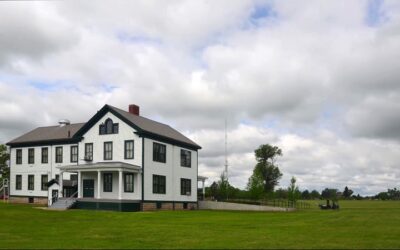
“Omaha Charley” Bristol wrote that Standing Bear presented him with this scalp shirt in 1876. It is a fine example of work that appears to predate the Reservation era.
It’s no surprise that we have a lot of interesting items in our collections. But sometimes the story of how an artifact came to us is as good as the item itself. Consider the Bristol Collection of Native American Artifacts. How did one man, “Omaha Charley” Bristol, build what is now one of our most important collections? Tina Koeppe tells the story in the Winter 2009 issue of Nebraska History.
Omaha Charley (the nickname refers to the tribe, not the city) traveled with the Kickapoo Indian Medicine Company in the latter nineteenth century. Medicine shows were part vaudeville, part Wild West show, and part early-day infomercial. Flamboyant western costumes and Native American performers helped sell cure-all elixirs such as “Sagwa,” a laxative made with a combination of herbs and alcohol.

As part of the show, Bristol displayed a collection of relics to “enlighten the public on Indian life.” Eventually he set out on his own. “Omaha Charley and His Band of Wandering Sioux” toured the country for years. Unlike Kickapoo, this wasn’t a medicine show—Bristol billed it as a traveling Indian museum. Visiting reservations, Bristol bought items with unusual and high quality beading, quillwork, and decorative details. He also liked objects with interesting stories behind them or associated with famous people such as Red Cloud, Young Man Afraid of His Horses, and Standing Bear.

David Charles Bristol, aka “Omaha Charley” After retiring to Homer, Nebraska, in 1898,
Bristol kept his collection in a building on his property. Despite offers, he refused to sell individual items. He wanted everything to be kept together and persevered. He felt it was his legacy. Bristol loaned the collection to the Nebraska State Historical Society in 1906 (the NSHS eventually purchased it). In 2007 the museum received a Saving America’s Treasures Grant and a private donation to fund the conservation of the Plains Native American artifact collection. For two years, technicians Tina Koeppe and Jessica Waite stabilized, rehoused, and cataloged hundreds of artifacts, including the Bristol collection.




